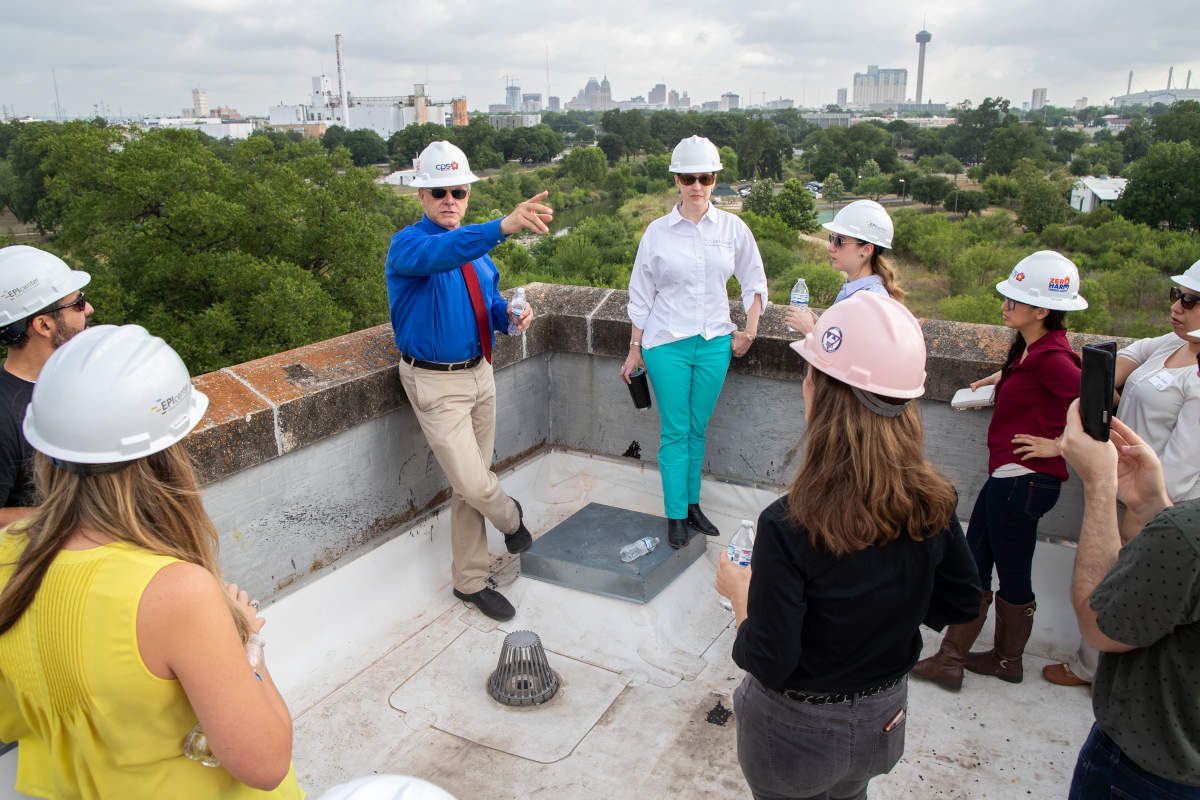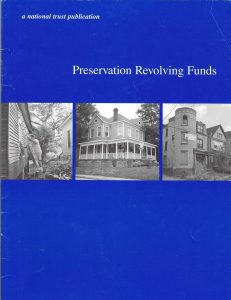
Photo credit: Vincent Michael
Historic Properties Redevelopment Programs: Getting Started
What is a HPRP?
A Historic Properties Redevelopment Program is one that uses dedicated capital for a real estate project at one or more historic properties. From the 1970s through the early 2000s, these kinds of programs were more commonly called Revolving Funds or Revolving Loan Funds. The more inclusive name, Historic Properties Redevelopment Program, is embraced to reflect the range of program types.
Some programs are strictly based on loans, others buy, rehabilitate and then sell properties, and others use options or other means to secure site control and redirect a property’s fate. Often, the sale or lease of a property, or the successful repayment of a loan, will replenish the original investment, enabling the funds to be reinvested, or revolved, into another property. Not all funds revolve, making the new name more accurate. These kinds of programs literally buy time for a historic property.
So how do you start?
Roadmap
- Conduct a Feasibility Study, including the program type
- Raise initial capital—fundraising plan and campaign
- Staffing and organizational structure
- Determine guidelines for the fund
- Manage risk
- Establish eligibility criteria for project
- Establish review procedures
- Determine easement/covenant structure
- Marketing plan
- Document and share success
- Recapitalization plan

Feasibility Study RFP Examples
Feasibility Study Examples
- Butte Citizens for Preservation and Revitalization, Butte, Montana
- Connecticut Trust for Historic Preservation (statewide)
- Downtown Joplin Alliance, Joplin, Missouri
- Madison-Morgan Conservancy, Madison, Georgia
- Sarasota Alliance for Historic Preservation, Sarasota Florida (Executive Summary)
Examples of Programs
Preserve Rhode Island: Revolving Fund Program
This real estate-based program enables the organization to intervene when an at-risk historic property is identified. Through the revolving fund, Preserve Rhode Island (PRI) can undertake preconstruction planning, enter into option agreements and short-term ownership arrangements, acquire and stabilize properties, establish long-term leases, and lead major construction projects. The level of intervention depends on the situation and the property.
Two properties in the same town illustrate this. The Chase Farmhouse, built c. 1890, was town-owned, but threatened due to lack of use and ongoing maintenance costs. PRI entered into a five-year curatorship lease agreement with the town and renovated the house as two residential units in partnership with the town. After 20 years of vacancy, the farmhouse is once again a home. The Valentine Whitman House, c. 1696, had been a house museum, but was in need of a new purpose. PRI stepped in to explore business models. Returning the house to residential use was the best option, so they sensitively rehabbed the house, readying it for its next chapter as a private home. It sold in October of 2022 and is protected with easements.
Downtown Joplin Alliance: Empire Market Project
Opened in 2018, the Empire Market, located in Joplin, Missouri, is a growing public market with 20-25 vendors each week throughout the year. Featuring produce, baked goods, meat, cheeses, beer, wine, crafts, and more, the market is located in a historic building dating to 1907. It serves as a community gathering space, is a draw for regional visitors and tourists, and is an incubator for small business.
The success of this project spurred the Downtown Alliance to explore the idea of creating an Endangered Properties Program and Revolving Fund for downtown Joplin. The idea is to identify and acquire vacant and underutilized buildings, stabilize or rehab them, and sell them to a preservation-minded buyer with easements. With two dozen properties already identified, the program uses option agreements and accepts property donations. Then they can undertake needed engineering assessments, marketing, architectural drawings, economic feasibility studies, etc. to chart a course for a positive outcome for the building and the city.

